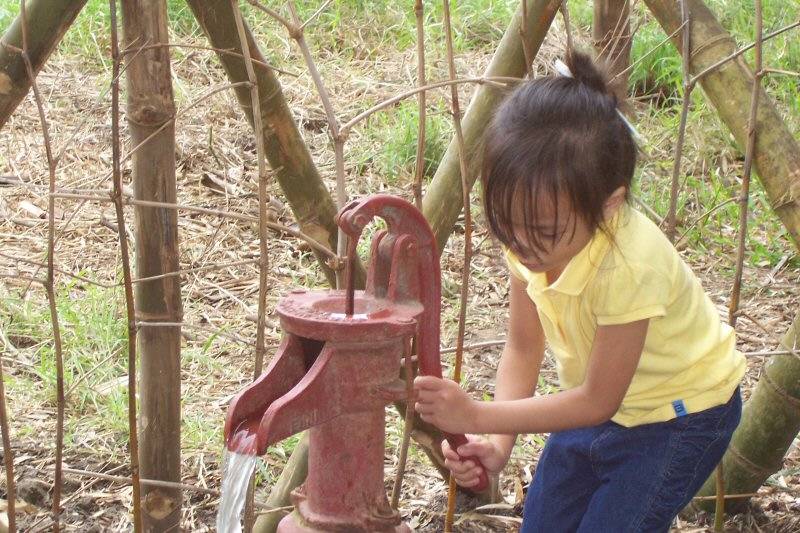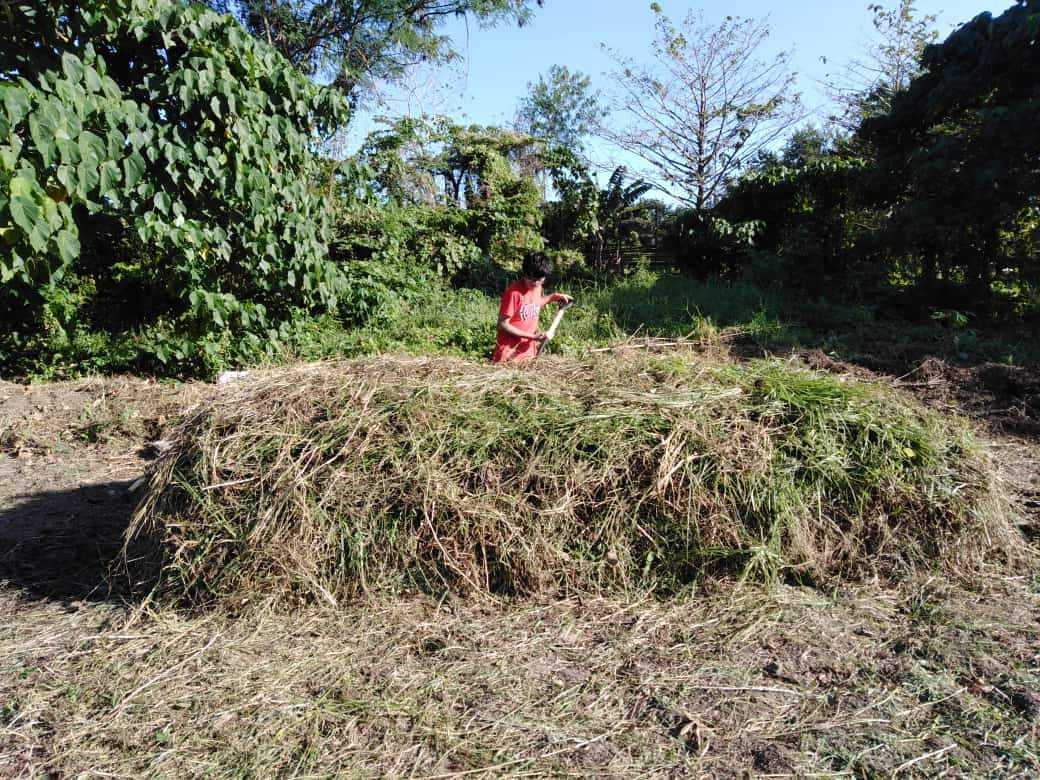
GCWS - Where Seeds Grow
By Anna Teresa Slater (High School English and Drama Teacher)
“This is my school, ‘Nay.”
“Anak, we just entered the gate. You haven’t even met the teachers or seen anything else yet.”
“But I’m sure.”
This conversation is not uncommon for families who visit Gamot Cogon Waldorf School for the first time. As one goes through the unadorned bamboo gate and steps onto the grassy dirt path, it is as if time has moved backwards. The campus is a deep breath of fresh air with its quaint, native-style classrooms embraced by lush greenery.
The teachers often talk about what it is that produces this effect on people —especially children— so spontaneously after stepping through the gates. One response has prevailed over all others: Nature. In Gamot Cogon, the outdoors is also a classroom. Being outside —whether in play, farming, or observation— is an important part of the school’s curriculum and culture. Dr. Raoul Cañonero, an orthopedic surgeon and a school parent who teaches Physiology and Botany in the high school, encourages children to move their bodies and be outdoors. He explains, “moving the body enhances the fine and gross motor skills of an individual. Moving in nature —barefoot walking, climbing trees, balancing on a log —deepens the development of the sense of balance, proprioception, spatial orientation. It is also linked with brain development.”
The innate love of nature is preserved as early as kindergarten wherein the classes go on weekly nature walks through not only the 5-hectare campus but also onward to parts of the extended 16 hectares of grazing land in which the campus is nestled. The children visit the beehives or moo back at the cows. They pick up bronzed leaves or collect oddly-shaped stones, treasures which they take back to the classroom and even back home as gifts for their family.
The lower school students care for potted plants, and by class three they experience a 3-week block purely on experiencing the basics of farming. The students are outside every morning preparing the plot, planting, and nurturing their crops until the day that they are able to happily harvest their organic rice and vegetables. Highlights often include a chance to ride on a carabao, farming and playing in the rain, and having a day spent cooking, eating, and sharing the food that they themselves have produced. Farming then becomes a weekly habit for every level until class 10. This includes composting, crop rotation, learning concepts of sustainability and various forms of growing a variety of vegetables while keeping the soil and ecosystem healthy.
Mr. Aeon Mapa, the farming teacher for the middle and upper school, is trained in Biodynamic Agriculture. He ensures the students do hands-on work. One of their big yearly activities is creating Biodynamic compost heaps which are built by stacking alternating layers of plant matter and cow manure. Mr. Aeon often talks about how at first the students are squeamish about having to handle cow manure. Eventually, the task of shoveling and hauling wheelbarrows of dung becomes a popular job! The heaps are massive at 6 feet high, 6 feet wide, and 12 feet long. Over a span of three months, the students observe how the large piles shrink down to a fraction of their original size.
“When the compost is ready, I let each of them hold and smell it so they can see how the original materials have broken down to a uniform soil,’ Mr. Aeon shares. “The creation of these heaps is a wonderful example of teamwork, collaboration, and community. On a spiritual level, the process of composting serves as a reminder of how everything is part of the cycle of life breaking down into chaos, ready to provide fertility for the next generation of growth.”
Mr. Aeon also shared how in 2019 most of our senior high school students attended a conference on Organic Agriculture alongside some seasoned farmers and agriculturalists. Many participants observed how tuned in our students were when it came to sustainable agriculture. “However,” Mr. Aeon smiled, “what was truly remarkable was not simply the students’ knowledge, but the ideals, values, and passion they exhibited when they spoke about the need for change in order to create a better future. Seeing such young people with a strong desire to work towards healing the earth and society was an inspiring and humbling experience for all of us.”
Being in nature is also incorporated into other subjects. Some students write Haiku from up a tree. Others create ephemeral mandalas using stones and twigs. Many are often seen sitting on the grass with sketchbooks and pencils, drawing plants or writing down their observations for science, or even discussing nature themes in literature or philosophy classes. One student joked about how she rides the jeepney home and sees students from other schools in pristine white uniforms while she often has mud on her shoes, shirt, and face. I asked her whether she was embarrassed by it and she laughed, ‘No Ms. Anna, it means I had a really fun day!’
Children intuitively seem to understand how nature meets a vital need deep in their souls. As educators, we have a huge task that goes beyond writing and arithmetic. Rudolf Steiner, the founder of Waldorf schools, said ‘we must educate children so that they are able to notice the world around them and their fellow human beings. This is the foundation for social life.’ By the time our students graduate from high school, it is our hope that students have a strong sense of love and reverence for their surroundings and understand how our lives are so strongly interwoven with it. They would recognize the spirit of nature; how celestial bodies influence plants, how trees affect weather, how all the elements of nature, industry, and human life are interconnected.
“This is my school, ‘Nay.”
Seeds need a suitable environment to grow and blossom into beautiful plants. Children know this, and we are happy to be able to provide a safe, healthy place where they can grow, thrive, and discover who they are so as to be able to find their place in the world.

